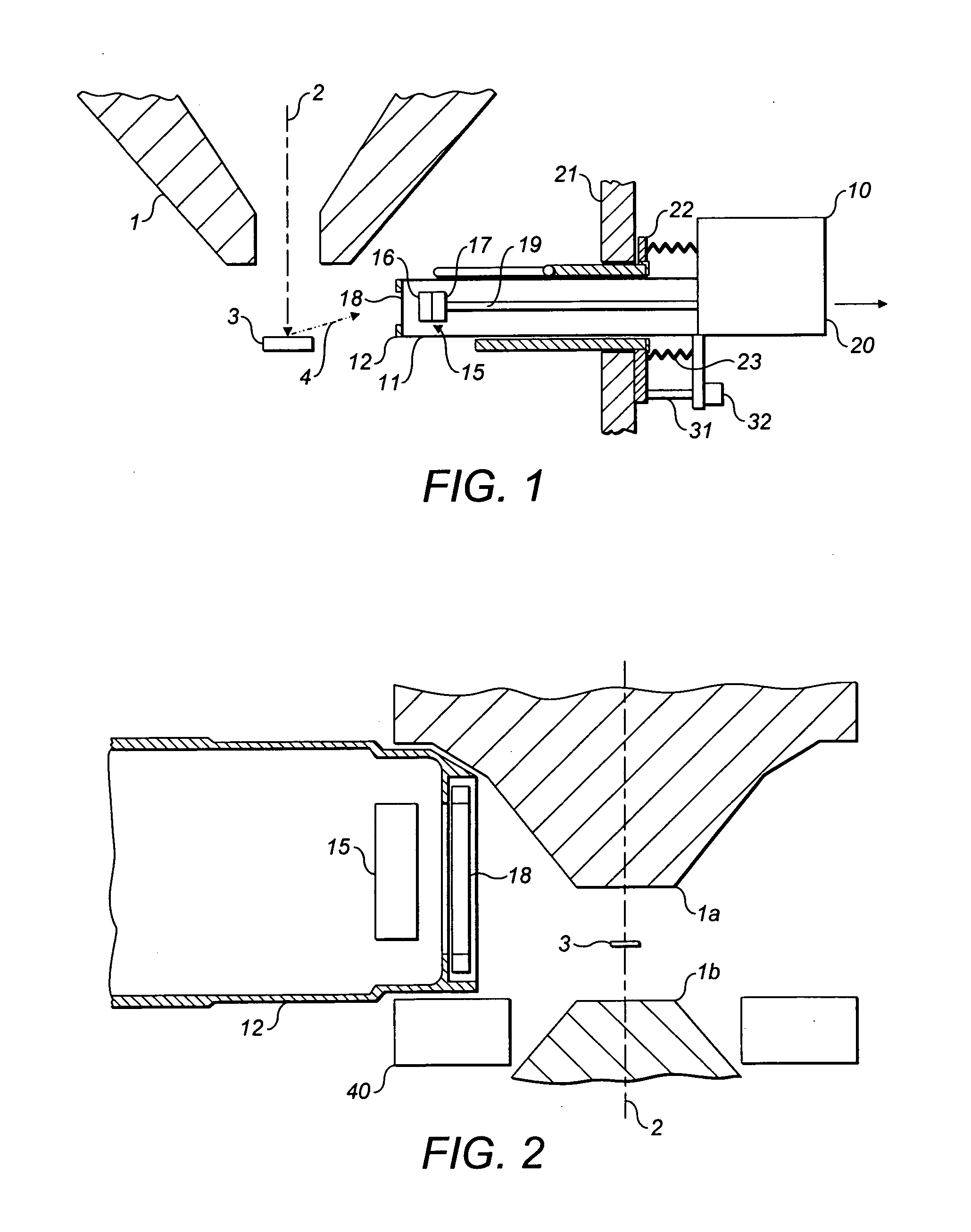X-ray analyser
a technology of x-ray analyzer and x-ray detector, which is applied in the field of x-ray analyzer, can solve the problems of x-ray detector experiencing a very high overload condition, the lens field may not be strong enough, and the number of high-energy x-rays and backscattered electrons is huge, so as to minimise the potential damage of the silicon drift detector and the disturbance of the operation of the microscope.
- Summary
- Abstract
- Description
- Claims
- Application Information
AI Technical Summary
Benefits of technology
Problems solved by technology
Method used
Image
Examples
Embodiment Construction
[0033]A transmission electron microscope arrangement with an example x-ray analyser according to the invention is shown in FIG. 1. The transmission electron microscope 100 has a lens pole piece 1a having a central aperture through which a focussed beam of electrons 2 impinges upon a specimen 3. A second lens pole piece 1b is positioned beneath the specimen in a known manner. The beam is accelerated by a strong electric field which provides electrons in the beam 2 with energies of typically at least 100 keV. The electrons are focussed by a number of electromagnetic lenses within the electron microscope column and pole piece. The relative arrangement of the pole pieces 1a,1b, beam 2 and specimen 3 is well known within the art. The high energy electrons cause x-rays and electrons 4 to be emitted / scattered from the specimen. In x-ray analysis it is these x-rays which are desired to be monitored and characterised using an x-ray analyser.
[0034]An x-ray analyser according to this example o...
PUM
 Login to View More
Login to View More Abstract
Description
Claims
Application Information
 Login to View More
Login to View More - R&D
- Intellectual Property
- Life Sciences
- Materials
- Tech Scout
- Unparalleled Data Quality
- Higher Quality Content
- 60% Fewer Hallucinations
Browse by: Latest US Patents, China's latest patents, Technical Efficacy Thesaurus, Application Domain, Technology Topic, Popular Technical Reports.
© 2025 PatSnap. All rights reserved.Legal|Privacy policy|Modern Slavery Act Transparency Statement|Sitemap|About US| Contact US: help@patsnap.com


